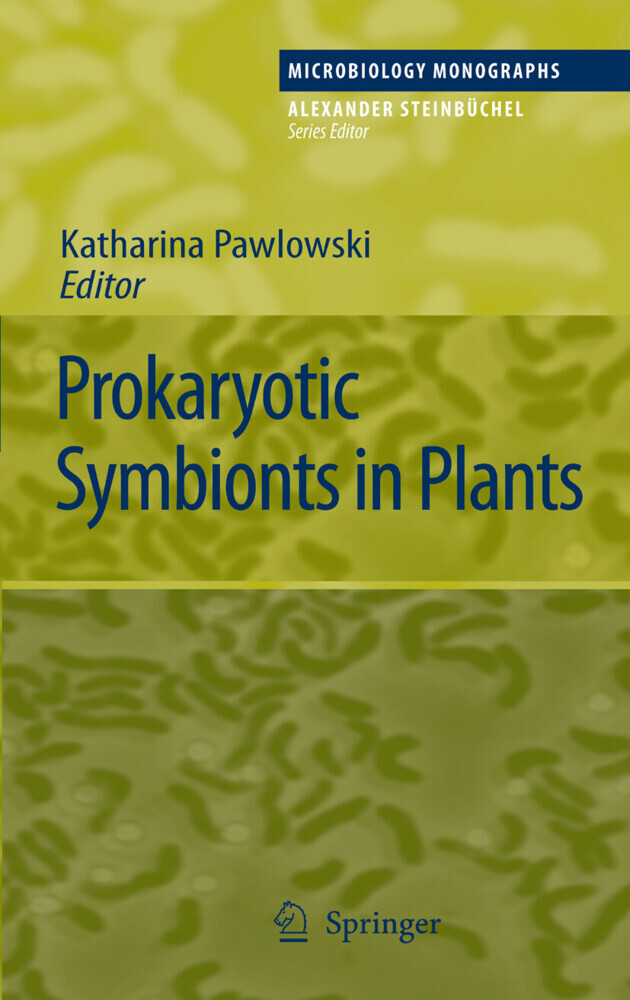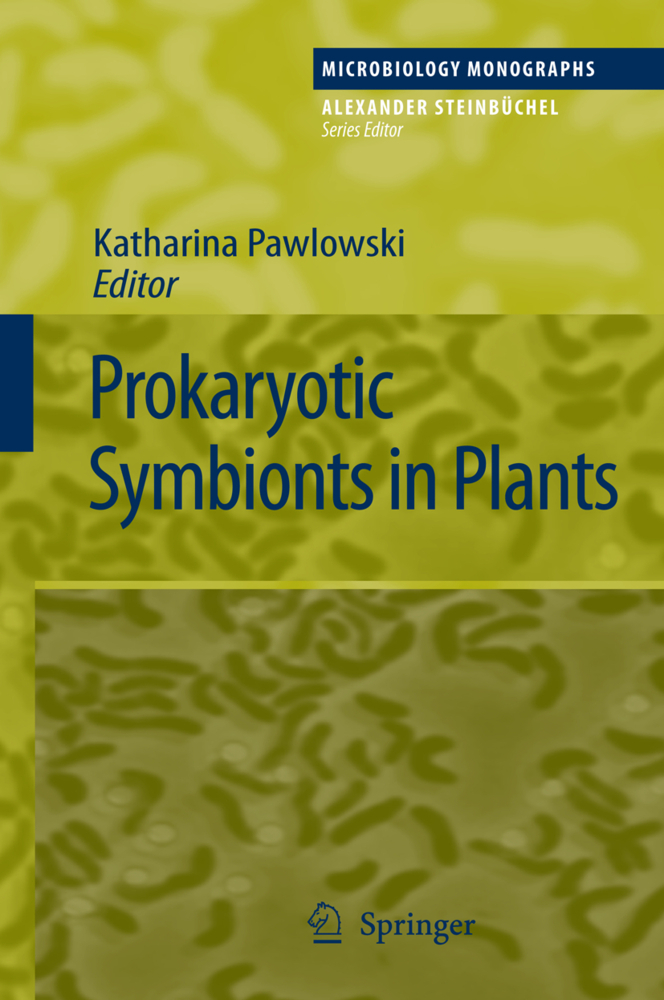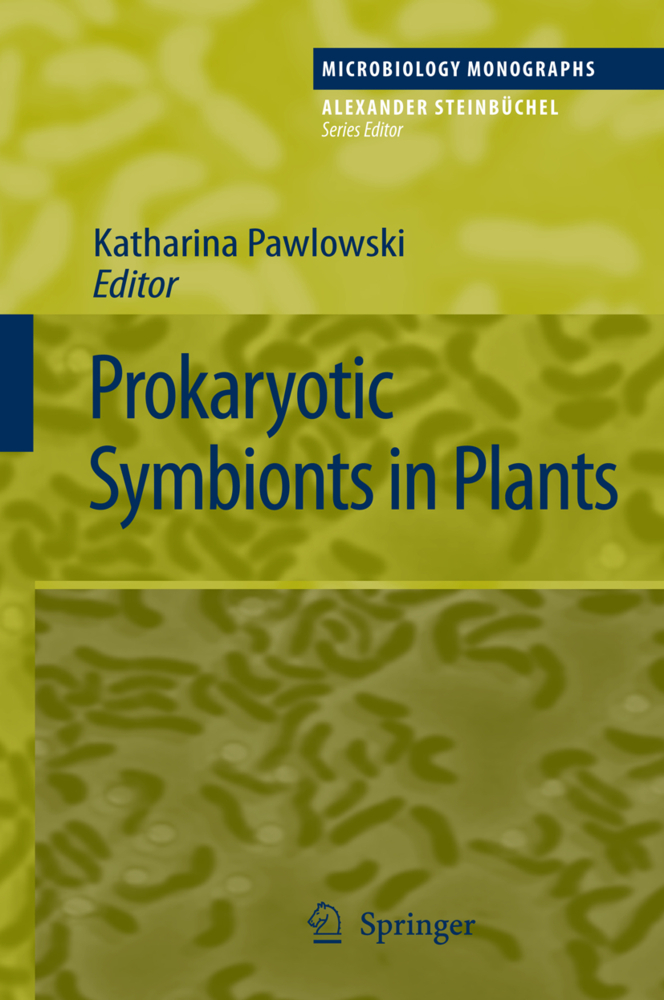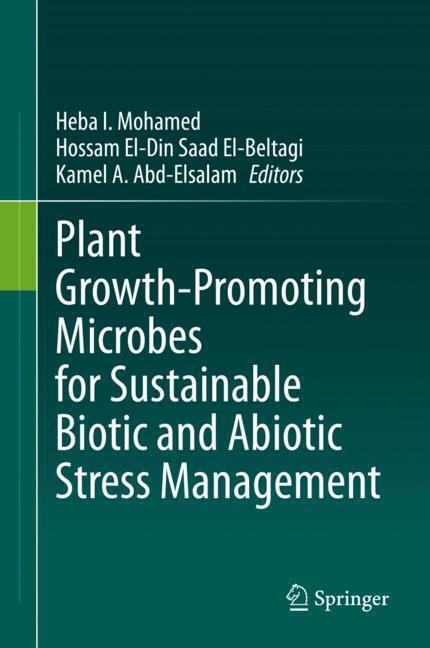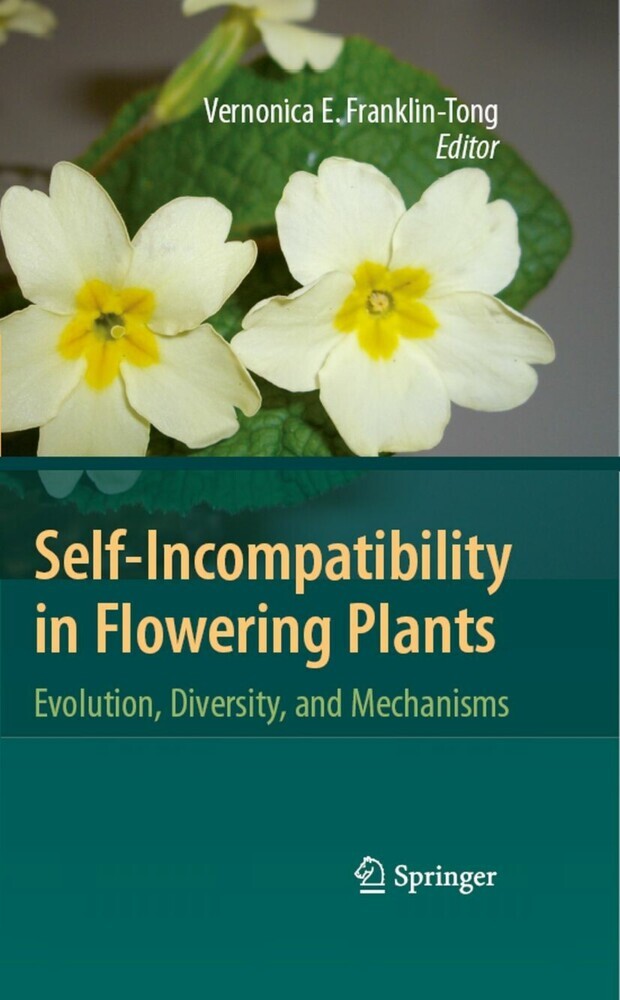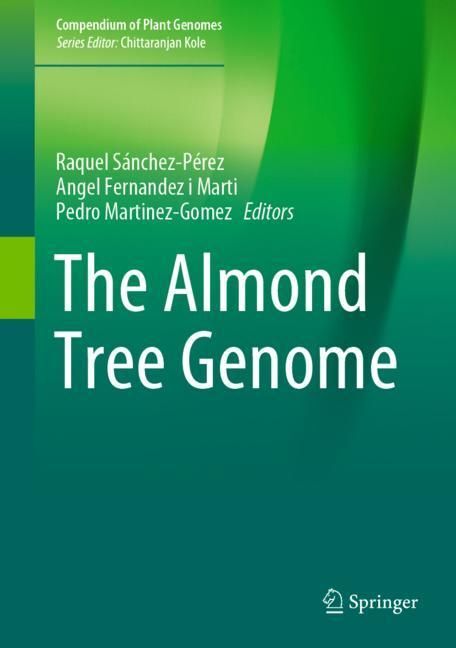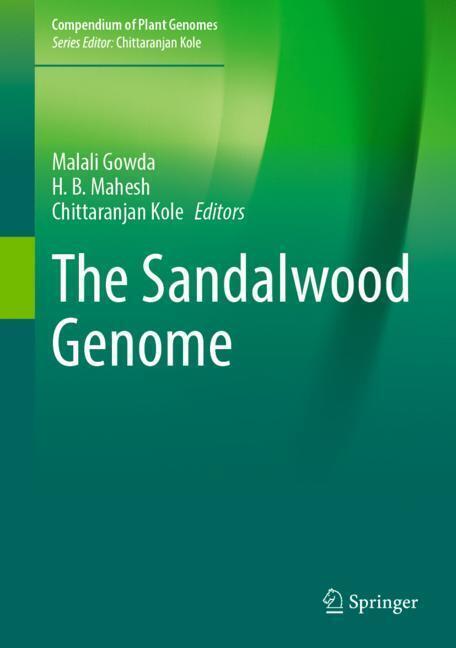Prokaryotic Symbionts in Plants
Prokaryotic Symbionts in Plants
Endophytic prokaryotes can invade the tissue of the host plant without triggering defense reactions or disease symptoms. Instead, they promote the growth of the host plant due to their ability to fix atmospheric dinitrogen and/or to produce plant growth-promoting substances.
This Microbiology Monographs volume presents up-to-date findings on the interactions between plants and beneficial prokaryotes, including the use of genomics for the analysis of plant-prokaryote symbioses and their evolution. Rhizobia-legume, actinorhizal and cyanobacterial symbioses are presented.
1;Preface;6 2;Contents;8 3;Part I Rhizobia-Legume Symbioses;10 3.1;The Diversity and Evolution of Rhizobia;11 3.1.1;1 Introduction;12 3.1.2;2 The Structure of the Rhizobial Genome;19 3.1.3;3 Species Concept Applicable to Rhizobia;19 3.1.4;4 Rhizobia-legume Symbiosis;21 3.1.5;5 Diversity and Taxonomy of Rhizobia;26 3.1.6;6 Phylogenetic and Biogeographic Inferences Based on the Analysis of Rhizobial Core and Accessory Genes;33 3.1.7;7 Taxonomy and Phylogeny of Legumes;35 3.1.8;8 Evolution of Interaction Between Rhizobia and Their Legume Hosts;36 3.1.9;9 Conclusions;40 3.1.10;References;40 3.2;Erratum to The Diversity and Evolution of Rhizobia;50 3.3;Making Rhizobium-Infected Root Nodules;52 3.3.1;1 Introduction;52 3.3.2;2 The Species Involved;53 3.3.3;3 Making Nodules;55 3.3.4;4 Infection;57 3.3.5;5 Perspectives;69 3.3.6;References;70 3.4;Functional Genomics of Rhizobia;77 3.4.1;1 Introduction;77 3.4.2;2 Rhizobial Genomes;78 3.4.3;3 Transcriptome Studies;83 3.4.4;4 Proteome Studies;91 3.4.5;5 Metabolome Studies;95 3.4.6;6 Other High Throughput Approaches;96 3.4.7;7 Concluding Remarks and Future Perspectives;97 3.4.8;References;99 4;Part II Actinorhizal Symbioses;107 4.1;Evolution and Diversity of Frankia;108 4.1.1;1 Introduction;108 4.1.2;2 Taxonomy;109 4.1.3;3 Phylogeny;116 4.1.4;4 Evolution and Relation with Plants;118 4.1.5;5 Diversity (Link with Soil Factors, Geography of Host Plant);122 4.1.6;6 Conclusion and Perspectives;124 4.1.7;References;125 4.2;Induction of Actinorhizal Nodules by Frankia;131 4.2.1;1 Introduction;131 4.2.2;2 How Frankia Enters the Plant;134 4.2.3;3 Nodule Structure;140 4.2.4;4 Symbiotic Signaling;143 4.2.5;5 Autoregulation of Nodule Number;146 4.2.6;6 Concluding Remarks and Future Perspectives;149 4.2.7;References;150 4.3;Physiology of Actinorhizal Nodules;159 4.3.1;1 Introduction;160 4.3.2;2 The Actinorhizal Nodule;162 4.3.3;3 Primary Metabolism in Non-Symbiotic Frankia;166 4.3.4;4 Nodule Primary Metabolism;167 4.3.5;5 Hydrogen Metabolism;174 4.3.6;6 The Oxygen Dilemma of N2 Fixation - How Actinorhizal Plants Deal with It;174 4.3.7;7 Future Prospects;175 4.3.8;References;176 5;Part III Cyanobacterial Symbioses;183 5.1;Physiological Adaptations in Nitrogen-fixing Nostoc-Plant Symbiotic Associations;184 5.1.1;1 Introduction;185 5.1.2;2 Specificity of the Associations;187 5.1.3;3 Physiological Adaptation in the Associations;189 5.1.4;4 Conclusions and Future Perspectives;201 5.1.5;References;203 5.2;Why Does Gunnera Do It and Other Angiosperms Don't? An Evolutionary Perspective on the Gunnera-Nostoc Symbiosis;209 5.2.1;1 Introduction;210 5.2.2;2 The Symbiotic Background;210 5.2.3;3 The Symbiotic Basics;212 5.2.4;4 A More Significant Past?;213 5.2.5;5 Evolutionary Drivers;214 5.2.6;6 Host Factors;217 5.2.7;7 Cyanobiont Factors;220 5.2.8;8 Conclusions;221 5.2.9;References;223 5.3;Cyanobacteria in Symbiosis with Cycads;227 5.3.1;1 Introduction;228 5.3.2;2 Coralloid Roots;229 5.3.3;3 Establishment of the Symbiosis;229 5.3.4;4 Specificity and Diversity of the Symbiotic Cyanobacteria;231 5.3.5;5 Characteristics of the Symbiotic Cyanobacteria;232 5.3.6;References;234 5.4;Structural Characteristics of the Cyanobacterium-Azolla Symbioses;236 5.4.1;1 Introduction;237 5.4.2;2 Structural Characteristics of the Cyanobacterial-Azolla Symbiosis;238 5.4.3;3 Conclusions and Outlook;260 5.4.4;References;261 5.5;Relations Between Cyanobacterial Symbionts in Lichens and Plants;265 5.5.1;1 Introduction;265 5.5.2;3 Concluding Remarks;268 5.5.3;References;269 6;Part IV Diazotrophic Endophytes;271 6.1;Diazotrophic Bacterial Endophytes in Gramineae and Other Plants;272 6.1.1;1 Endophytic Bacteria - General Definitions and Methods of Isolation, Characterization and Localization;273 6.1.2;2 Endophytic Bacteria as Biological Control and Plant Growth Promotion Agents;274 6.1.3;3 Diazotrophic Bacterial Endophytes;275 6.1.4;4 Conclusions and Outlook;290 6.1.5;References;291 7;Subject Index;302
Pawlowski, Katharina
| ISBN | 9783540754602 |
|---|---|
| Artikelnummer | 9783540754602 |
| Medientyp | E-Book - PDF |
| Auflage | 2. Aufl. |
| Copyrightjahr | 2009 |
| Verlag | Springer-Verlag |
| Umfang | 305 Seiten |
| Sprache | Englisch |
| Kopierschutz | Digitales Wasserzeichen |

